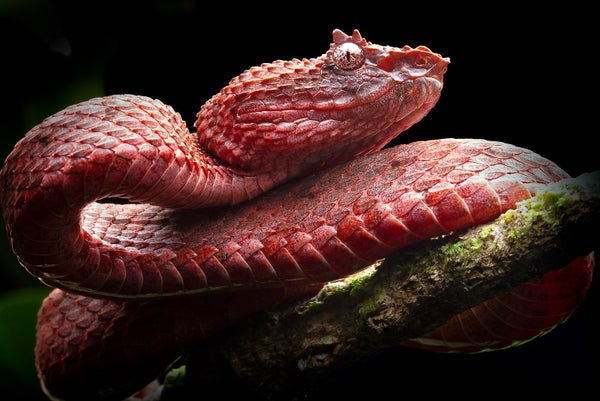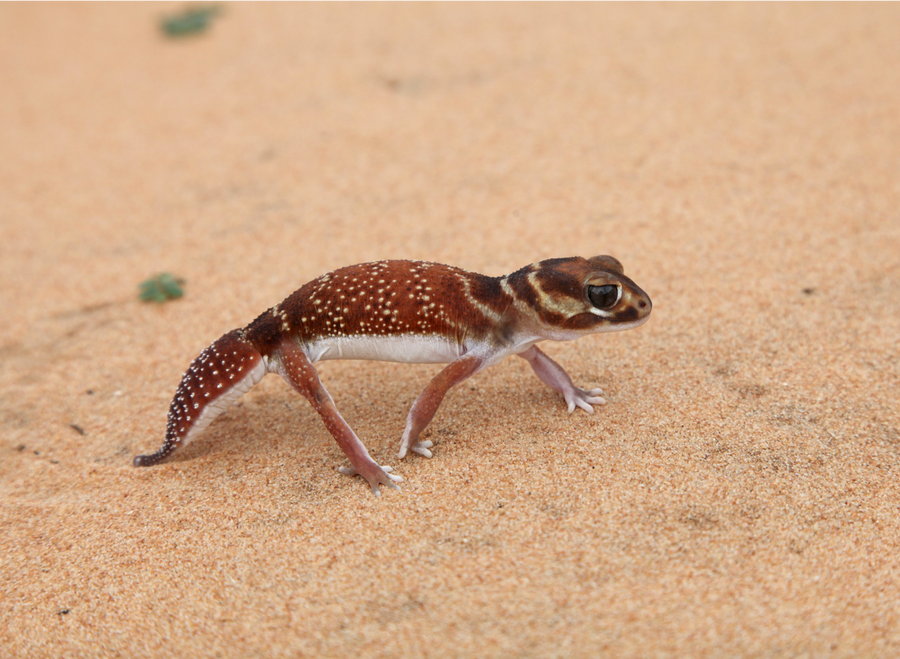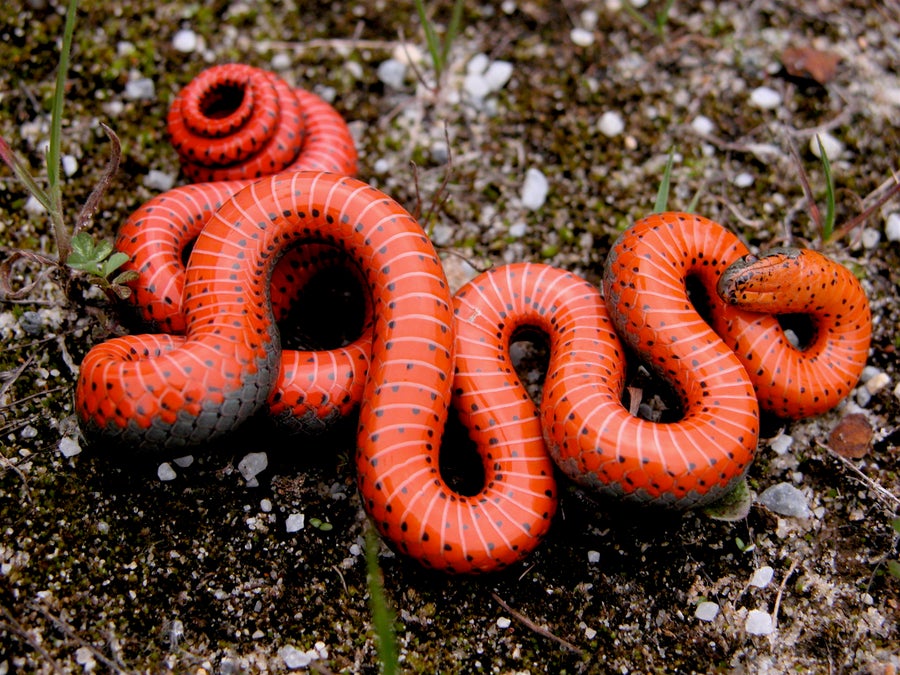February 23, 2024
4 min read
An Evolutionary ‘Big Bang’ Explains Why Snakes Come in So Many Strange Varieties
Snakes saw a burst of adaptation about 128 million years ago that led to them exploding in diversity and evolving up to three times faster than lizards

An eyelash pit viper from the New World tropics.
Alejandro Arteaga/Khamai Foundation
When they first evolved from lizards more than 100 million years ago, snakes were ecological bit players slithering around the fringes of ecosystems dominated by dinosaurs. But today there are around 4,000 species of snakes, ranging in size from green anacondas that weigh more than adult gorillas to thread snakes that are lighter than a paperclip. They are some of Earth’s most effective and diverse predators. “Snakes are truly exceptional,” says Daniel Rabosky, an evolutionary biologist at the University of Michigan.
Out of roughly 25 groups of lizards that independently lost their legs, snakes became the only one to truly explode in diversity. A new study published this week in Science explains why: genomic data has revealed that snakes experienced a burst of adaptation around 125 million years ago—early on in their evolutionary history—that helped them exploit multiple ecological gaps. “The paper demonstrates that snakes are an evolutionary ‘singularity’ that has changed the face of the Earth,” says Michael Lee, an evolutionary biologist at Flinders University in Australia, who studies reptile evolution but wasn’t involved with the new research.
To determine what set snakes apart from groups of legless lizards, Rabosky and a team of researchers constructed an in-depth evolutionary tree. They shaped its branches by using genomic data from more than 1,000 species of squamates (the order of reptiles that includes snakes and lizards) to chart how these scaly critters changed over time. Finally, they bolstered this dataset with dietary information from nearly 70,000 individual lizards and snakes, primarily specimens preserved in alcohol in museum collections.
On supporting science journalism
If you’re enjoying this article, consider supporting our award-winning journalism by subscribing. By purchasing a subscription you are helping to ensure the future of impactful stories about the discoveries and ideas shaping our world today.

A three-lined knob-tailed gecko (Nephrurus levis) from Shark Bay, Australia. This large gecko primarily feeds on insects but will occasionally consume other lizards. Credit: Daniel Rabosky/University of Michigan
The results showed a burst of early adaptation that was apparently linked to the development of specialized traits. These traits include chemoreceptive structures that help snakes expertly pinpoint their prey using scent and heat and flexible jaws that help them swallow oversized meals. Some snakes have evolved deadly venom to hunt larger prey.
The new paper does not go out on a limb to pinpoint which specific trait led to the success of snakes. Lee says it was probably an interplay of traits that helped them hit the evolutionary jackpot. “Snakes are successful because of a synergism of multiple adaptions [such as] elongated bodies, constriction, venom, flexible skulls,” Lee says. “Many legless lizards have one or two of these snake features but haven’t been nearly as successful.” He cites a group of geckos that have an elongated body and a flexible skull but have never diversified into more than a handful of species.
Rabosky agrees that the adoption of a suite of specialized traits likely helped supercharge snake evolution. Based on the study’s evolutionary tree, snakes appear to have evolved up to about three times faster than lizards. “The rate at which snakes evolve new features and evolve new kinds of diets has basically been kicked into overdrive,” Rabosky says. “Lizards are puttering around on a moped while snakes are on a bullet train.”
Such rapid evolution likely let snakes exploit more ecological gaps than lizards after the cataclysmic mass extinction that occurred 66 million years ago doomed several groups of reptiles, including nonavian dinosaurs. This versatility is still reflected in the diets of snakes today. Most living lizards stick to insects or other small arthropods; snakes are generally much more adventurous and will prey on animals ranging from rodents and birds to kangaroos and crocodilians.

A defensive display by a western ring-necked snake (Diadophis punctatus), native to the western U.S. Credit: Alison Davis Rabosky, University of Michigan
Although snakes have collectively evolved varied tastes, many species are highly specialized to target specific prey. These include species of shovel-nosed snakes, which evolved to dig up prey, and species of sea snakes, which swim with a paddlelike tail and snack on prey such as reef fish. Other species swallow bird eggs whole. Some even consume noxious fare that few other species would dare eat. Most lizards specialize far less and simply eat whatever invertebrates are small enough to fit in their mouth.
Rabosky and his co-authors describe the burst of evolutionary innovation that kick-started snake evolution as a “macroevolutionary singularity.” Like an evolutionary big bang, these rare events occur when a group of organisms rapidly diversifies into a variety of new species in the blink of an eye, by geological standards. The sudden explosion of flowering plant diversity during the Cretaceous period is another example of this phenomenon, which Charles Darwin called an “abominable mystery.”
It’s just one more example, Rabosky says, of how “these big bangs of evolution are profoundly important to the history of life on Earth.”
Source link


